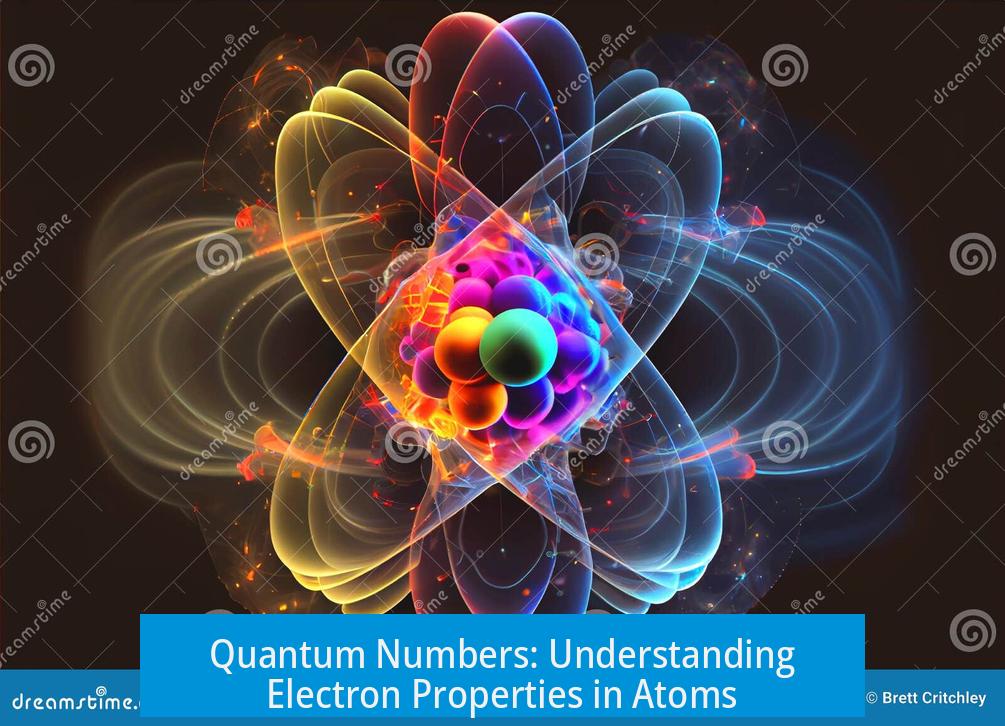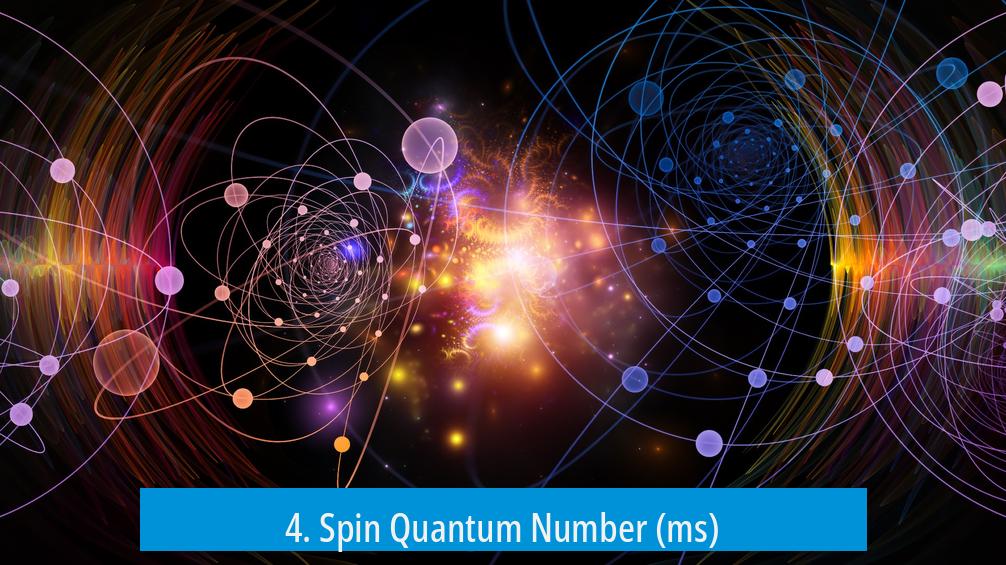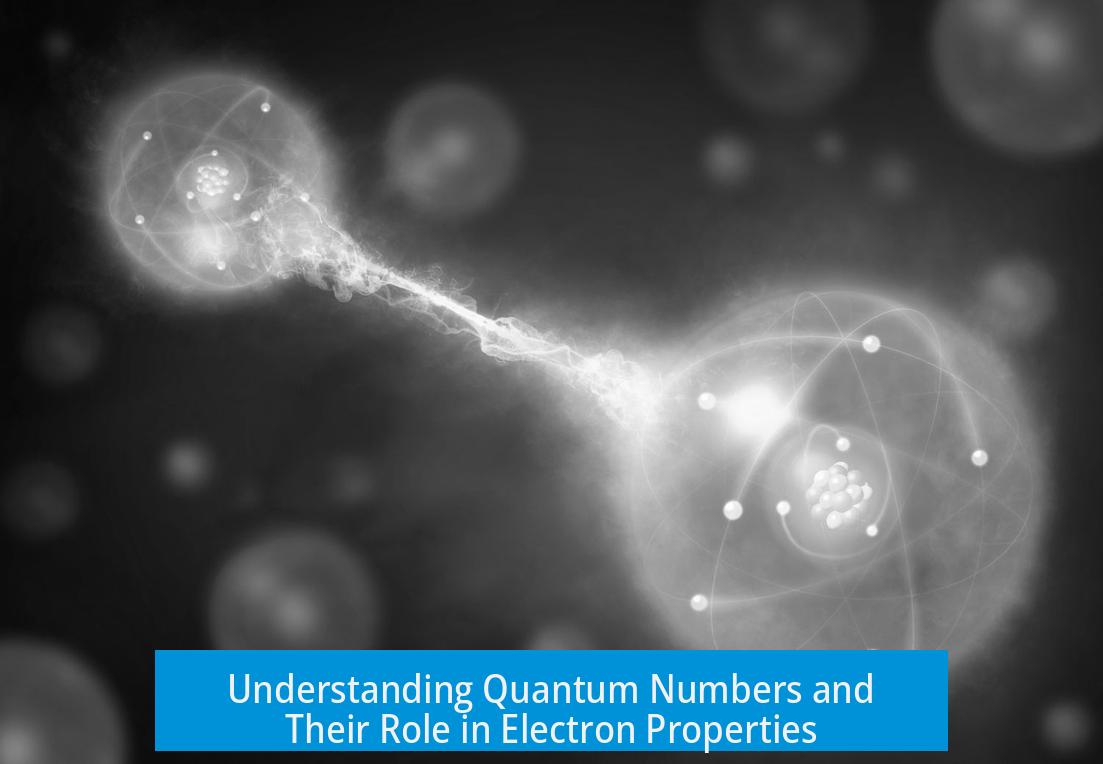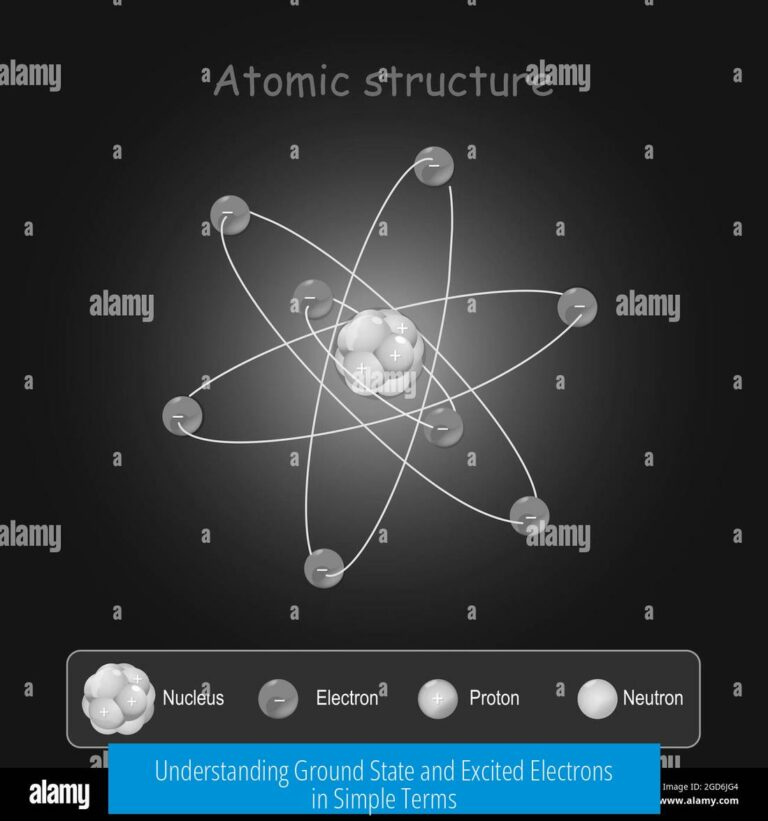Quantum Numbers: Understanding Electron Properties in Atoms

Quantum numbers are a set of numerical values that describe the distinct quantum state of an electron within an atom. They specify an electron’s energy, orbital shape, orientation, and spin. Together, these numbers serve as a unique identity for an electron and dictate its physical properties and behavior inside atoms.
1. Principal Quantum Number (n)
The principal quantum number n identifies the electron’s energy level or shell within the atom.
- It is always a positive integer (n = 1, 2, 3…).
- Higher n values correspond to orbitals with larger sizes and higher potential energy.
- For example, electrons with n=5 reside in the fifth shell—5s, 5p, 5d—and have more energy than those with n=1 (first shell).
- It is analogous to the row number of the periodic table; elements in the same row have electrons sharing the same principal quantum number.
- n is essential in formulas such as Bohr’s energy equation and Rydberg’s formula for hydrogen’s spectral lines.
The principal quantum number defines the basic “distance” and energy associated with an electron’s orbital, setting the scale for the electron cloud’s spatial extent around the nucleus.
2. Azimuthal (Orbital Angular Momentum) Quantum Number (l)
The azimuthal quantum number, l, describes the shape of the electron’s orbital.
- It can take integer values from 0 up to (n-1).
- Its values correspond to orbital types: l = 0 (spherical s orbitals), l = 1 (dumbbell-shaped p orbitals), l = 2 (complex d orbitals), and l = 3 (even more complex f orbitals).
- The orbital shape directly affects how an electron’s probability distribution is arranged in space.
The azimuthal quantum number connects to the electron’s angular momentum and thus influences chemical bonding and molecular geometry.
3. Magnetic Quantum Number (ml)
The magnetic quantum number ml specifies the orientation of an orbital in three-dimensional space.
- It takes all integer values between -l and +l, including zero.
- For an s orbital where l = 0, there is no orientation dependence since the shape is spherical.
- For p orbitals (l = 1), possible orientations are m_l = -1, 0, +1, corresponding to px, py, and pz orbitals aligned along the x, y, and z axes respectively.
- Higher angular momenta have more orientation possibilities. For example, d orbitals (l = 2) have five orientations (m_l = -2, -1, 0, +1, +2).
- The magnetic quantum number reflects the orbital’s angular momentum component measured along a chosen axis, typically the z-axis.
This quantum number plays a key role in determining electron behavior in external magnetic fields, known as the Zeeman effect.
4. Spin Quantum Number (ms)

The spin quantum number ms represents the intrinsic spin angular momentum of the electron, a fundamental property with no classical analog.
- It can assume only two values: +1/2 or -1/2, indicating two possible spin orientations (“spin up” and “spin down”).
- Each orbital may contain a maximum of two electrons with opposite spins.
- In singly occupied orbitals, spin can be assigned arbitrarily.
- Spin is separate from orbital angular momentum but essential in explaining atomic structure and magnetism.
This quantum number resolves the Pauli exclusion principle that forbids two electrons in the same atom from sharing the same set of four quantum numbers.
5. Comprehensive View: The Four Quantum Numbers in Electron Identity
These four quantum numbers (n, l, ml, ms) together define a unique electron state. They correspond to the solutions of the Schrödinger equation for the hydrogen atom and serve as a complete set of commuting observables in quantum mechanics.
Think of quantum numbers as an electron’s “identity card” that specifies its energy, shape, orientation, and spin.
In hydrogen-like atoms, the Schrödinger equation provides exact solutions in which these quantum numbers appear naturally as labels of each solution. In multi-electron atoms, similar principles apply with added interaction complexities.
Real atomic orbitals used to describe electron clouds in chemistry are often constructed as linear combinations (superpositions) of states defined by these quantum numbers. Some orbitals used commonly may not correspond to single, definite values of the magnetic quantum number due to symmetry and bonding effects.
Summary Table of Quantum Numbers
| Quantum Number | Symbol | Physical Meaning | Possible Values |
|---|---|---|---|
| Principal Quantum Number | n | Energy level and size of orbital | Positive integers (1, 2, 3, …) |
| Azimuthal Quantum Number | l | Orbital shape/type | 0 to n – 1 (0=s, 1=p, 2=d, 3=f) |
| Magnetic Quantum Number | ml | Orbital orientation along z-axis | -l to +l (e.g., -1, 0, +1 for l=1) |
| Spin Quantum Number | ms | Electron spin orientation | +1/2 or -1/2 |
Additional Insights on Quantum Numbers
- Quantum numbers are not just abstract labels; they correspond to measurable physical properties such as energy levels and angular momenta.
- The principal quantum number controls the radial probability distribution of the electron, influencing atomic size and ionization energy.
- Azimuthal and magnetic quantum numbers define orbital shape and spatial orientation, affecting the atom’s chemical bonding and spectral lines.
- Spin introduces magnetic properties of electrons and explains electron pairing in orbitals.
- The Pauli exclusion principle emerges from the requirement that no two electrons in the same atom share identical sets of quantum numbers.
Practical Importance of Quantum Numbers
Quantum numbers guide chemists and physicists in understanding:
- Atomic spectra and electronic transitions
- Electron configurations and periodic table structures
- Chemical bonding and molecular geometry
- Magnetic behaviors and spin interactions in materials
- Advanced quantum phenomena relevant to atomic and molecular physics
Thus, quantum numbers form the foundation of atomic theory and the broader field of quantum chemistry.
Key Takeaways
- Principal quantum number (n) defines the energy level and size of the orbital.
- Azimuthal quantum number (l) determines the orbital shape.
- Magnetic quantum number (ml) specifies the spatial orientation of the orbital.
- Spin quantum number (ms) indicates the electron’s spin direction.
- All four quantum numbers combined uniquely identify an electron’s quantum state within an atom.
- They correspond to the fundamental solutions of the Schrödinger equation for atomic systems.
- Quantum numbers explain electron structures and spectral properties critical to chemistry and physics.
What does the principal quantum number (n) tell us about an electron?
It shows the electron’s energy level and the size of its orbital. Higher n means the electron is in a higher energy shell farther from the nucleus.
How is the azimuthal quantum number (l) related to orbital shapes?
L defines the shape of the orbital. For example, l = 0 is an s orbital (spherical), l = 1 is a p orbital (dumbbell-shaped), and l = 2 is a d orbital, with more complex shapes.
Why does the magnetic quantum number (m_l) vary between -l and +l?
Because it specifies the orientation of the orbital in space. Each value corresponds to a different directional alignment of the orbital around the nucleus.
What does the spin quantum number (m_s) indicate about an electron?
It represents the electron’s intrinsic spin direction, either +1/2 or -1/2. Two electrons in the same orbital must have opposite spins.
Can two electrons in the same orbital have the same spin quantum number?
No. According to the Pauli exclusion principle, they must have opposite spins (+1/2 and -1/2) to occupy the same orbital together.





Leave a Comment